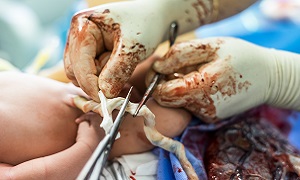Best Doctors in India for Placenta Accreta Treatment
- Gynecologist, Gynae-Oncologist, Gurugram, India
- over 22 years’ experience
Profile Highlights:
- Dr. Priyanka Batra is one of the best doctors in India in the Department of Gynaecology and Gynae Oncology.
- Her expertise extends to the subspecialties of laparoscopic surgeries, colposcopy, and minimally invasive surgeries.
- She is a highly qualified doctor and has done multiple diplomas in the specialization of Gynae Oncology.
- Gynecologist, Gynae-Oncologist, Gurugram, India
- Over 30 years’ experience
Profile Highlights:
- Dr. Sabhyata Gupta is one of the first and best gynecologists in India to perform robot-assisted surgery for gynecological patients who are affected with cancerous and non-cancerous conditions.
- She received multiple awards for her enormous contribution to the field of Gynae Oncology.
- Gynecologist, Gynae-Oncologist, Gurugram, India
- Over 20 years’ experience
Profile Highlights:
- Dr. Shradha Chaudhari is an eminent name in the Department of Gynaecology and Gynae Oncology.
- She has made an enormous contribution to the upliftment and improvement of the treatment quality of gynecological patients suffering from oncological conditions. She has done multiple certificate degrees pertaining to her specialization, which adds to her expertise.
Best Hospitals in India for Placenta Accreta Treatment
Placenta Accreta
Placenta accreta is a serious condition that can occur during pregnancy. In a typical pregnancy, the placenta detaches easily from the wall of the uterus after delivery. However, when placenta accreta occurs, the placenta grows into the uterine wall and does not separate easily after the delivery. When this condition becomes severe, it can even lead to excessive bleeding, which may even be life-threatening. It might require a blood transfusion or even a hysterectomy.
In some cases, it is also possible for the placenta to invade the muscles of the uterus as well, or grow through the uterine wall.
Symptoms
In most cases, placenta accreta often does not cause any signs or symptoms during pregnancy, although sometimes vaginal bleeding might occur during the third trimester.
Occasionally, the condition is detected during a routine ultrasound.
Causes & risk factors
Although researchers are not sure, this condition is believed to be related to abnormalities in the lining of the uterus. However, generally, placenta accreta occurs without a history of uterine surgery.
There are several factors which may increase the risk of placenta accreta. They include the following:
- Previous uterine surgery- If you have had multiple C- or other uterine surgeries, the risk of placenta accreta increases.
- Maternal age- Placenta accreta is known to be more common among women who are above the age of 35.
- Placenta position- If the placenta covers your cervix partially or totally or sits in the lower portion of your uterus, then your risk of placenta accreta is higher.
- Previous childbirth- With an increased number of pregnancies, the risk of placenta accreta increases as well.
Diagnosis
Treatment
If your doctor or healthcare professional suspects placenta accreta, he/she will need to work with you to develop a plan to deliver the baby safely.
In the case of extensive placenta accreta, a C-section might be necessary, which is going to be followed by the surgical removal of the uterus. This procedure can also be termed a cesarean hysterectomy, and it helps prevent any life-threatening blood loss that can occur if there is an attempt to separate the placenta.
If you are having vaginal bleeding during your third trimester, your doctor is likely going to recommend pelvic rest or hospitalization.
Before surgery
Your health care team is going to include your obstetrician and gynecologist, subspecialists in pelvic surgery, as well as an anesthesia team, and also a pediatric team. Your health care professionals will be going to discuss the risks as well as potential complications associated with placenta accreta. They will also likely discuss the possibility of your:
- Having a blood transfusion during or after the delivery
- Requiring to be admitted to the intensive care unit after your delivery if life-threatening bleeding occurs
During surgery
During your C-section, your healthcare professionals are going to deliver the baby through an initial incision in your abdomen and a second incision in your uterus. After the delivery, a member of the health care team is going to remove your uterus, with the placenta still attached, to prevent severe bleeding.
After the procedure, you will no longer be able to become pregnant. If you had planned more pregnancies in the future, you can discuss possible options with your doctor.
In rare cases, the uterus and placenta might be kept intact, and allow the placenta to dissolve over time. However, this approach may have serious complications, including:
- Severe vaginal bleeding
- The need for a hysterectomy in the future
Complications
Placenta accreta can lead to the following conditions:
- Heavy vaginal bleeding- Placenta accreta can pose a major risk of severe vaginal bleeding after delivery. A life-threatening condition can be caused by bleeding, which can prevent your blood from clotting normally. It might also cause lung failure or kidney failure. A blood transfusion may also likely be necessary.
- Premature birth- Due to placenta accreta, labor might begin early. If placenta accreta causes bleeding during one’s pregnancy, you may need to deliver the baby earlier.






